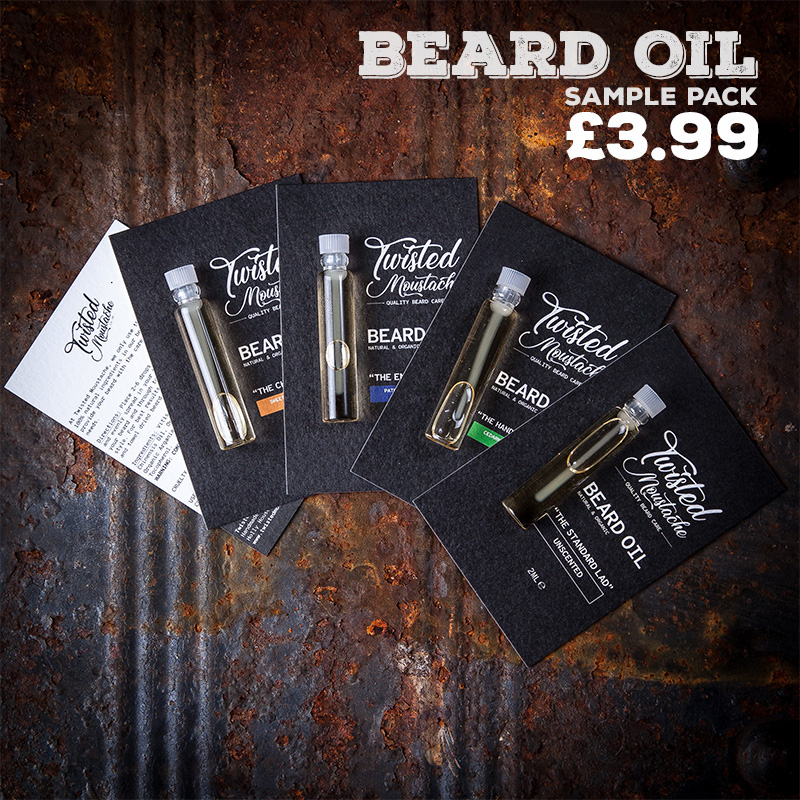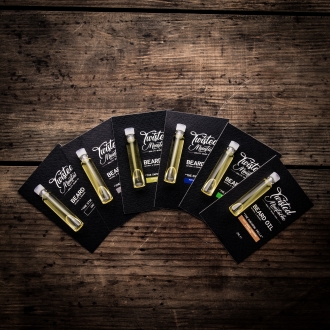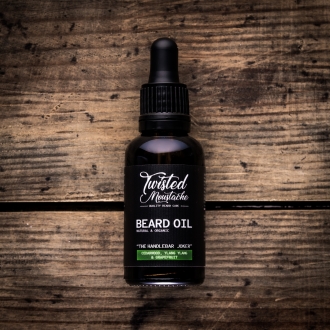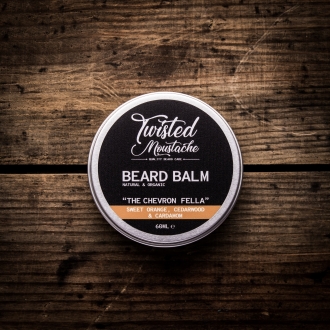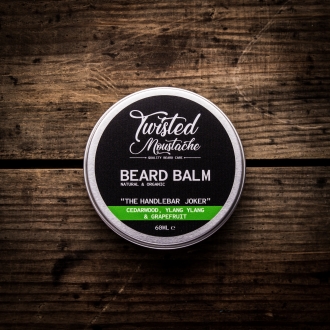The Evolution of Men's Beauty Standards
By Jack Shaw (Guest Post) | Last updated 31st July 2025
How would you fit in with a group of guys from the Georgian era? Men look significantly different now than they did just a century ago. Beauty standards change throughout the generations, influencing how they dress and adjust their facial hair. From Ancient Greece to the modern age, lads have been on a wild ride.
Male Style Standards in the Ancient Days
Beauty is in the eye of the beholder, though it has changed across eras and civilisations. Here is how societal expectations have changed for men since recorded history began.
Starting in Mesopotamia
Historians say human civilisation started between the Tigris and Euphrates rivers in Mesopotamia. In this ancient land, your facial hair and attire depended on your cultural upbringing. Sumerians typically had clean-shaven faces, though some had longer beards. Men wore kaunakes with petals and feathers closely resembling the modern kilt.
While Sumerians shaved their beards, the Semitic men donned long hair extending from their chins. From Judaism to Islam, it has been significant to these cultures for millennia. For example, people of the Jewish faith believe their facial hair bridges the mind and heart and represents personal growth.

Gil Dbd,CC BY-SA 4.0, via Wikimedia Commons
In these ancient times, men pictured broad shoulders and big biceps as their ideal figure. They modelled themselves after Gilgamesh, a Mesopotamian king in the Early Dynastic Period. This historical figure purportedly had a beard and incredible strength despite the absence of 24-hour gyms.
Examining Ancient Egypt
Egypt is famous for its pyramids and palaces, though the old civilisation influenced male beauty norms. Its men benefited from the hydrating beard oil invented in Mesopotamia to shape their facial hair, though their looks likely depended on their class status. Wealthy Egyptians could afford the newest grooming tools.
Lads in this society shaved their heads and wore wigs because of these tools. Pharaohs used shaving cream with arsenic and lime to remove hair, despite how unappealing that might seem today. While there weren’t straight razors, they improvised with edges from cutting materials and flint blades.
Egypt was among the first societies to use makeup, and cosmetics influenced male beauty standards. It was common to see men applying eyeliner derived from mineral powders and fats. Authentic beards were less prominent in these societies, as guys opted for fake facial hair made from metal or goat hair. For example, King Tut may have worn a narrow beard to symbolise power and immortality.
Gauging Ancient Greece
Ancient Greece produced mythological figures like Zeus and Poseidon, who have incredible strength. If you were a man during these times, you were expected to look something like them. Male beauty standards heightened in this age, as ancient Greeks connected attractiveness and morality, superficially viewing appearances.
A lean and muscular body made men attractive in Athens and Sparta, though the Greeks had unique tastes. For instance, they prioritised unibrows to promote symmetry and balance. Men and women used makeup to fill the spaces between their eyebrows and enhance their beauty.

Ancient Greece leaned into masculinity in the military, government and everyday life. Facial hair represented strength and wisdom, so men aspired to make theirs attractive. From Socrates to Plato, the civilisation’s most influential figures donned chin hair to symbolise their intellect.
The Roman Empire of Beards
Men from the Roman Empire strived to be warriors with lean and masculine bodies. Once they turned 17, they became eligible for military service and tied it to their masculinity. Ancient Greece significantly inspired its literature, military and architecture, but these historical eras differed in facial hair and image expectations.
Some periods in Rome emphasised cleanliness and shaven faces, prompting the elite to eliminate their beards. However, influential leaders like Hadrian made chin and cheek hair cool again.
When in Rome, do as the Romans do. Would you enter a public bath? Guys from the ancient empire experienced better grooming practises at communal buildings where they bathed and exercised. You may have learnt better shaving techniques, like using a razor or exfoliating with a pumice stone. Men may view hygiene as personal, but it was more inclusive in the Roman Empire.
A Modern View of the Male Aesthetic
Male standards have changed through empires and civilisations, though the transitions might not take long. Here’s a more recent look at how society’s expectations for men have evolved.
Improving Your Victorian Era Looks
The Victorian Era spanned 1837 to 1901 and significantly shaped British society. While there were political reforms, the men also experienced evolving image expectations. You were less likely to see scruffy beards and unkept hair, especially among the elites.
Makeup was popular in Egypt but not so much in Britain due to the new ruler. Queen Victoria I deemed makeup vulgar and an abomination, thus making it irrelevant in society. Guys no longer wore these cosmetics, and it took until the 20th century for women to embrace them again. However, the lads did benefit from the rise in barbershops and grooming techniques.
The most impactful part of this era may have been the Victorian beard. Men went nearly 150 years with minimal facial hair, so the 19th century introduced a new time. Young men initially caused controversy with their mutton chops and unorthodox whiskers, but these styles eventually became standard during the whiskers movement.
Impressing Your War Brethren
While the Victorian Era reinvigorated beard enthusiasm, the interest quickly waned at the beginning of the 20th century due to military conflict. Britain and the rest of the world entered two world wars in three decades, so beauty standards shifted to accommodate these norms.
If you were in the army, beards were forbidden for safety reasons and uniformity.

Constant training for war meant men emphasised physical strength and a muscular appearance. This era followed the Gilded Age and the Second Industrial Revolution, when wealth and appearances mattered more to high society. If you were wealthy, people expected you to flaunt it with your clothing and jewelry. Overall, it was a very Gatsby time to be alive.
Once the mid-20th century arrived, beards were still out of vogue. Men rocked tight haircuts and clean-shaven faces and used Hollywood as inspiration. The movie stars groomed themselves well, so why shouldn’t you? The post-war era included a rise in daily health and beauty products, such as hydrating aftershave balm and cologne.
Setting Standards With Mass Media
Experts say the advanced age is 80 and older, currently encompassing those born in the 1940s or earlier. If you grew up in the second half of the 20th century, you may recognise the changes in beauty principles throughout the five decades. While transitions are expected, they occur more quickly due to mass media. Each decade experienced rapid change due to TV and movies.
In the 1960s, beards started their comeback due to hippie and bohemian cultures. Conforming to society’s idea of male perfection was no longer necessary if you wanted to be famous. While the decade started with clean-cut guys, it ended with the Beatles growing their beards as their music evolved. Their grooming choices led to other musicians like the Bee Gees and ZZ Top growing facial hair.
The 1980s returned the Greek and Sumerian desire for muscles and definition. Bodybuilders and actors like Arnold Schwarzenegger and Sylvester Stallone captured attention and influenced guys to look like them. Simultaneously, men flaunted big hair and embraced mullets and Jheri curls, thus rejecting uniformity in style and expectations.
Dressing the 21st-Century Modern Male
From Ancient Rome to the present day, guys have cared about trends and their appearances — you just might have difficulty getting them to admit it. Contemporary men still use TV and movies to craft their style, though social media has significantly influenced male culture. These apps have 5.2 billion users, so inspiration spreads quickly for men and women.
Whether they get on TikTok or YouTube, lads have more access to grooming videos and tutorials. You can get your smartphone out and pull up a how-to video on handlebar moustaches in just seconds, thus promoting creativity and varied styles. Social media has also heightened international connections, so guys can learn style from their favourite celebrities abroad.
Like other decades, beards have endured waves of trends in the last 25 years. Guys in the 2000s ditched the facial hair, though it came back in the 2010s due to hipsters. The movement encouraged individuality and alternative styles, which often led to longer whiskers. Despite living in an urban environment, these guys rocked ruggedness while maintaining a well-groomed look.
The Future of Male Beauty Ideals
Trends come and go, so only time will tell what will happen to male beauty standards next. However, it’s a good bet that technology will influence civilisation. TikTok, Instagram, and other apps will influence fashion and facial hair, whether you’re in secondary school or much older. In the future, men will particularly emphasise their skincare and grooming routines to perfect their image in a digital-oriented world.
Jack Shaw is a writer, editor and grooming enthusiast. His explorations of men’s health, fitness and fashion can all be found on Modded, a men’s lifestyle publication on which he serves as the senior writer. Reach out to him via LinkedIn or see more from him by subscribing to the Modded Minute.


